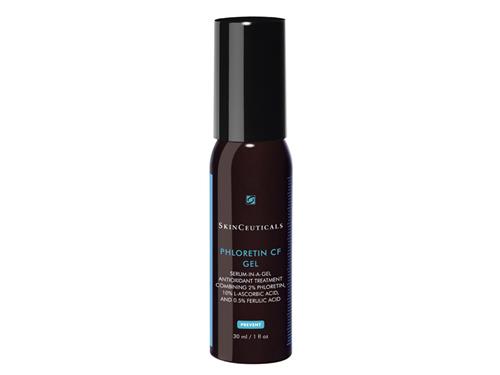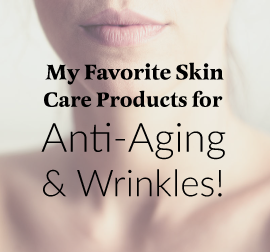Ultimate Guide to Laser Treatments
Laser treatments may sound scary but really can produce smoother, more evenly-toned, and more collagen which translates into more youthful skin. Aesthetic laser systems have been developed to treat an array of skin issues, and there are over 50 systems now 20 years after the first companies designed them for skin treatments. Many of them do the same things, but the confusing array of laser names and companies allows the industry to market them as unique. For example, you may be seeing the name BBL suddenly. This stands for broadband light, but is really just an IPL/photorejuvenation system marketed under a different name. No wonder consumers are getting increasingly confused.
Safety has become a critical issue with lasers. The key to safe laser treatment is not the laser, but who is doing the treatment. This is not an area to try to save money. Go to the best, most experienced person you can. Laser complications include burns, scars, death, temporary or permanent discoloration of the skin, texture problems, and psychological pain. In the United States, the most lawsuits and harm were from laser hair removal last year. Surprising isn’t it! Most of the deaths were related to overuse of the topical numbing creams often given to patients.
Below are some of the problems that may be treated with skin lasers:
- Scars – acne, trauma and surgical
- Sun damage
- Wrinkles, including fine lines and deeper wrinkles
- Dark circles and sagging eyelid skin
- Age and brown spots
- Birthmarks, including port wine stains and nevus of Ota
- Aging, loose skin
- Unevenly textured skin
- Redness and dilated blood vessels, excessive flushing
- Acne
- Unwanted hair
- Tattoo removal
- Excessive sweating
What laser treatment is the best?
There is actually no “best” laser treatment. The right laser is the one that will be most effective in treating your individual skin problems. Laser skin treatments fall under two main categories: Ablative and non-ablative. There are so many lasers now that it’s impossible to discuss them all. Below are a few of the main ones.
Ablative lasers
Ablative means “the removal of body tissue,” and ablative lasers do just that. Treatment with an ablative laser is more aggressive than some other types of laser treatments and is an effective way to rejuvenate aging skin. Light energy is delivered to the skin surface, zapping away the sun-damaged upper layer. The intense light energy also stimulates natural collagen growth. These require recovery or “downtime.” But with the newer fractionated lasers, it’s usually a week or less. The fresh skin that forms after you have healed is smoother and tighter. Ablative laser treatments are the top-performer for aging skin for treating wrinkles, scars of all types (see above) uneven skin tone and tightening skin.
Non-ablative lasers
“Non-ablative” lasers treat can treat redness, facial veins, superficial brown spots, fine wrinkles, unwanted hair, etc. with less damage to the skin surface. The laser energy is often “fractionated” or just delivered differently. The result is that non-ablative lasers have a faster recovery, but you may need several sessions to achieve the level of skin rejuvenation you want. The treatment triggers superficial collagen growth, so your results may not be as dramatic as an ablative laser. That might be fine, depending on your goals and expectations.
IPL & BBL treatments
These aren’t true lasers because they are more than one wavelength, but are included here because most people think of them as a laser. I call them “laser cousins.” Also sometimes referred to as photorejuvenation or fotofacials. These are gentle, don’t usually “break” the skin and have low recovery times. Great for mild sun damage, superficial brown spots, texture improvement, redness, flushing and smaller dilated blood vessels on the face. Best for face, neck, and chest, but other areas can be treated.
CO2 laser treatments
CO2 lasers are usually ablative and used to treat many skin problems, such as excising skin on the upper eyelid, traumatic or acne scars, improving burn scars, tightening skin, treating sun damage, and treating wrinkles. Most in use are fractionated now, which means less recovery time. With full area (not spot) treatments they can also reduce the risk of skin cancer and precancerous spots with 4-5 treatments.
The laser creates microscopic thermal damage within the skin layers, which triggers natural collagen and new skin cell growth. Recovery takes usually a week or less.
Fraxel laser treatments
These have been very popular and the Restore (or Fraxel Dual) is two lasers in one. Both wavelengths are usually used at the same treatment. One wavelength (Er: glass 1550 nm) treats texture problems, mild/moderate acne scars, and fine wrinkles. The other wavelength (thulium 1927nm) treats pigment and brown spots. Recovery time is typically about 1-5 days, depending on your goals. Your skin will appear mildly sunburned and be slightly swollen for 1-4 days. Brown spots may appear darker for up to 5-10 days.
The Fraxel Repair is a CO2 laser.
YAG laser treatments
“YAG” refers to “neodymium-doped yttrium-aluminum-garnet,” a complex scientific word for a specific crystal. These lasers can reach into the deeper skin tissue. High energy light is focused on particular skin flaws, such as spider veins, unwanted hair, birthmarks, brown spots, pigmented lesions, and facial veins. There are many different YAG lasers so talk to your provider about downtime. Sometime you’ll hear the term “Q-switched” which usually just means the wavelength of light from that laser has been halved. That does not mean that it’s half as effective, it’s just aiming at a different target.
Pico laser treatments
These lasers send out pulses shorter than a nanosecond. It was initially hoped these would be more effective for tattoo removal and other problems. But these have not been proven yet to be a significant advantage over other lasers in general. And they are usually more expensive.
What is the recovery time for a cosmetic laser treatment?
Depending upon the type of laser treatment, recovery time will vary. Your age, smoking, general health, and sun damage also affect healing time. In most cases, a full recovery requires 0-7 days. But it’s safer to leave 2-3 weeks before important events or photos in case your treatment doesn’t go as planned, especially if the area will be visible. Discuss the expected recovery time with your doctor and let him/her know if you have an event coming up.
What are the side effects of laser treatments?
As the light energy is essentially damaging your tissue, laser treatments carry some risk. The most common side effects are redness, swelling, itching, and some discomfort during healing. Other more serious complications include infection, skin color changes, burns, and scarring.
How much does laser skin treatment cost?
The cost varies, based upon the type of treatment. The cost of treatments ranges from $300 to $5,000, depending on which laser. Avoid package “deals” unless you’ve been a patient before or know the office is reputable. Many “dark side” clinics fold with lawsuits leaving patients stranded, or refuse to reimburse if you have a complication and don’t want to finish the series.
Will I need multiple treatments?
You may need several treatments. Many people choose to undergo a series of treatments with a fractional laser rather than undergoing a more aggressive ablative procedure. These treatments are safer, have fewer side effects, and heal faster. But you may not get as good a final result, depending on the problem.
What does treatment feel like?
Most laser treatments now are comfortable or fairly comfortable, especially with topical numbing cream applied for 30-60 minutes before the treatment. Be sure to tell your doctor if you are allergic to Lidocaine. Ask about numbing! Many offices now also have a Zimmer cooler which blows cold air during the treatment and really helps. Good offices use many distraction and pain relieving techniques.
What will I look like right after treatment?
This really varies from no change to needing to hide for 3-7 days. Be sure to discuss this with your doctor or provider.
Who isn’t a candidate for laser treatment?
These days almost everyone is a candidate unless pregnant, breastfeeding (especially the first 3-6 months), or have an active infection or illness. Be sure to tell your doctor if you have a history of cold sores, staph infections, poor scarring, or any other problem that might affect your healing.














